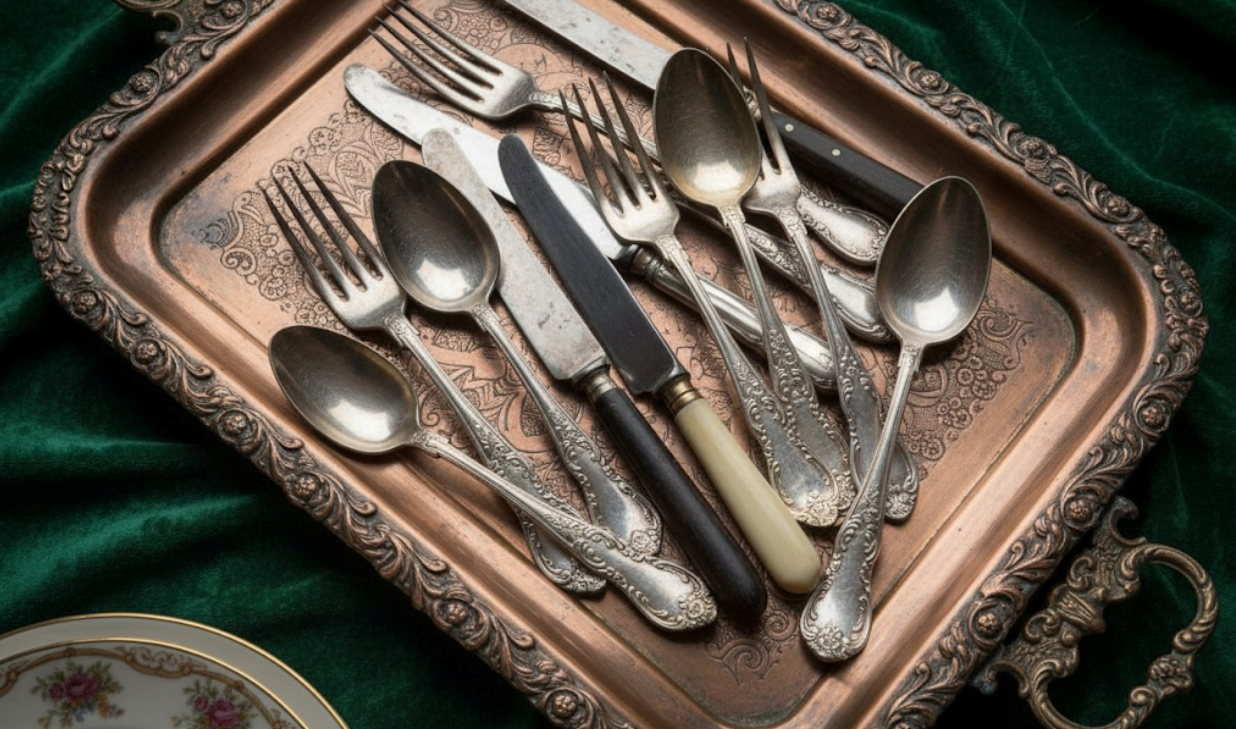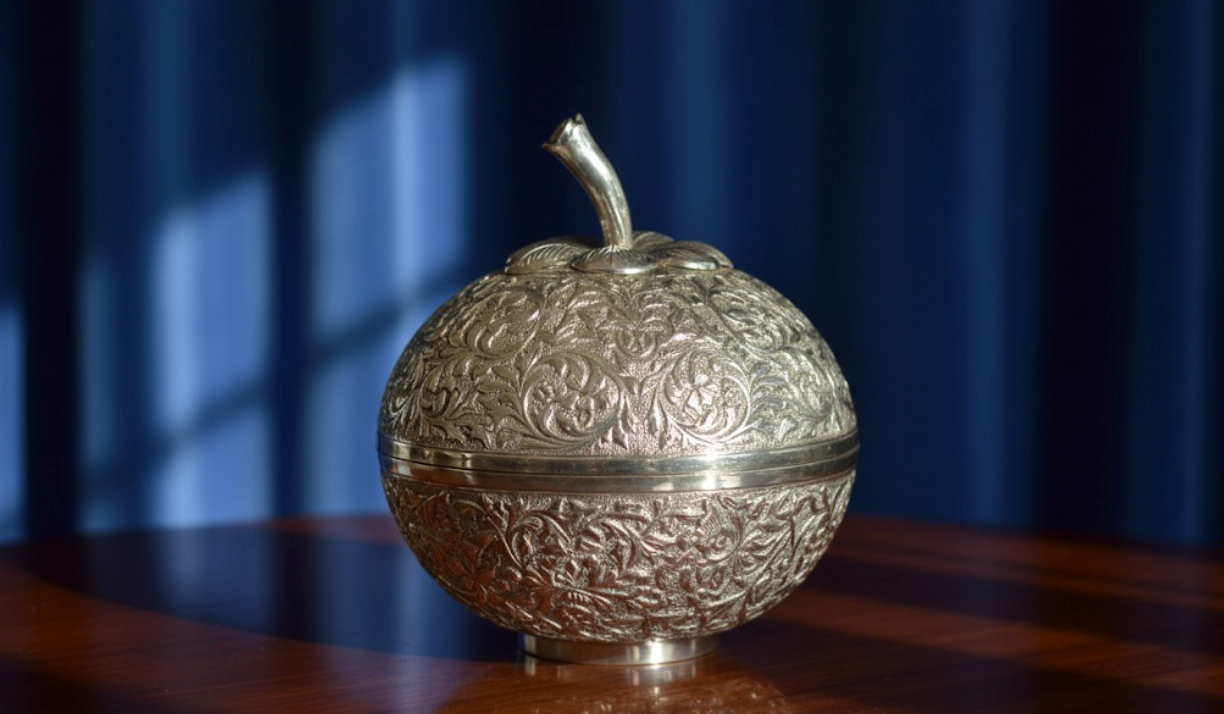That box of sterling silverware in your cabinet may look elegant, but in reality, it’s often a hassle. It tarnishes quickly, demands constant polishing, and takes up valuable space you could use for things you actually enjoy. For many people, silverware isn’t a treasure; it’s a burden they rarely use.
The bigger problem comes when you finally decide to sell. Pawn shops pay low, consignment is slow, and online buyers can feel risky. It’s easy to feel stuck with no good options. That’s why this guide shows you what really determines value, and why Okanagan Gold and Silver is the best place to sell with confidence.

What Makes Sterling Silverware Valuable?
When it comes to silverware, many pieces are not equal in value. Understanding the traits that distinguish valuable sterling silver flatware from common or plated pieces is key if you plan to sell silver Okanagan. Below are the most important factors that determine worth.
1. Sterling Silverware vs. Silver-Plated
The biggest factor is whether your flatware is sterling silver or just silver-plated.
- Sterling silver is made of 92.5% pure silver and 7.5% other metals (usually copper) for durability. Because of its high silver content, it always carries an intrinsic value based on the current silver market price.
- Silver-plated items, on the other hand, only have a thin layer of silver over base metals like nickel or brass. They usually hold little or no melt value and are valued more for appearance than material.
Look for hallmarks like “Sterling” or “925” stamped on the piece. Marks such as “EPNS” or “Silver Plate” usually indicate plated flatware, which is far less valuable.
2. Condition & Wear
Condition matters most if you’re aiming for the collector market. Dents, deep scratches, or heavy polishing can reduce a piece’s appeal. However, if you’re selling purely for silver content, even tarnished or damaged items still hold the same melt value. Collectors will pay more for rare items in excellent condition, but refiners pay based on weight regardless of wear.
3. Design, Maker & Rarity
Some silverware is worth much more than its silver content because of design and brand reputation. Collectible patterns like Wallace’s Grande Baroque, Reed & Barton’s Francis I, or Tiffany pieces are sought after and can command prices well above melt value.
Items from prestigious makers or with unique decorative features (floral motifs, engraved handles, pierced designs) can also increase demand. Limited-edition patterns or discontinued sets often appreciate in value due to rarity.
4. Completeness & Matching Sets
A complete set of flatware, including forks, spoons, knives, and serving utensils, is generally worth more than mismatched or partial sets. Collectors and buyers like the consistency and convenience of full sets. Still, individual pieces, like single spoons or forks, retain value and can be sold, usually closer to melt price. The premium comes when all pieces are intact and match the original design.
Five Common Reasons People Sell Silverware
There are plenty of reasons people decide to part with their silverware, and most of them come down to practicality. Here are the five most common ones.

1. Hard to Maintain
Sterling silver must be cleaned and polished regularly to prevent tarnish, which naturally forms when silver reacts with sulfur, moisture, or air.
Over time, the copper component in sterling silver can oxidize and develop greenish or blackish corrosion (verdigris), particularly if items are stored improperly or in humid conditions. Many owners find this upkeep burdensome and prefer to sell rather than continuously care for the pieces.
2. It’s Just Old
Even if your silverware is still functional and in decent shape, tastes change. What matched your decor in the past may no longer feel modern or desirable. Selling gives you a chance to trade in old sets for styles you’ll use more, freeing yourself from pieces that no longer “fit.”
3. Takes Up Too Much Space
Silver flatware sets often come in large presentation boxes, chests, or trays. When moving, downsizing, or shifting to a smaller living space, these bulky items become liabilities. Many people decide that parting ways with silverware is a way to reclaim valuable cabinet or drawer space.
4. High Silver Prices
Silver’s market value fluctuates, and in recent years it’s seen significant upward trends. Selling while prices are strong can yield a better return than waiting. Many sellers time their sales to coincide with peaks in the silver spot price.
5. Financial Needs
Life happens; unexpected expenses like car repairs, medical bills, or debt burdens can drive people to turn unused assets into cash. Silverware is one tangible asset many have sitting unused. Selling it offers a quick way to raise funds without relying on credit.
Determining the Value of Your Silverware
Knowing how much your silverware is really worth helps you negotiate smarter and choose where to sell. Here are the main factors to look at when estimating value:
1. Spot Price to Consider When You Sell Silverware
The base value of sterling silver is tied to the spot price (the market rate for pure silver). To estimate your silverware’s metal value:
- Weigh your silver pieces (in troy ounces or grams).
- Multiply by 92.5% (because sterling silver is 92.5% pure silver).
- Multiply that result by the current spot price of silver.
For instance, if you have 1 troy ounce of sterling silver, you’d multiply 1 × 0.925 × the current silver price to get a melt-value estimate. Still, buyers typically pay less than full melt value, often discounting for refining and overhead.
2. Physical Condition
Wear and tear, like deep scratches, dents, or heavy polishing, can lower collector or resale interest, though it doesn’t reduce the silver content. A tarnished or slightly imperfect piece may still fetch close to melt value, but pristine items will always command more premium, particularly among collectors.
3. Engravings or Monograms
Personalized engravings, monograms, or family initials sometimes detract from resale value in the collector market. Many buyers prefer clean, unaltered surfaces. Engraved pieces often sell closer to melt value than collector value, unless the engraving has historical significance.
4. Special Designs, Maker & Rarity
Here is where your silverware can be worth much more than just its metal.
- Pattern & Design: Antique or designer patterns (like Wallace’s Grande Baroque, Reed & Barton’s Francis I, or Tiffany designs) can attract premium offers above melt value.
- Maker / Brand: Items from prestigious silversmiths or limited production runs are more collectible.
- Rarity & Demand: Discontinued or rare patterns increase value. A common pattern might only get melt value, but a rare one could bring a big premium.
Where Can You Sell Silverware?

When it’s time to sell silver, you’ll want to skip pawn shops, consignment stores, and risky mail-in offers and instead turn to local precious metals dealers. A local specialist like Okanagan Gold and Silver gives you the best blend of fairness, transparency, and convenience.
Accurate, Face-to-Face Appraisals
Local dealers can inspect your silverware in person. They’ll check for hallmarks (e.g., “925” or “Sterling”), weigh pieces accurately, and distinguish between sterling and silver-plated items. Because they specialize in precious metals, they understand both melt value and collectible potential.
Better Payouts with Less Overhead
Unlike pawn shops that pad margins heavily or mail-in services that absorb shipping and handling fees, a local dealer doesn’t have as many hidden costs. This means more of the true value stays with you.
Immediate Offers, No Waiting
There are no waiting days or weeks for your money. You bring the silverware, they appraise it, and you get cash or an immediate payout. No shipping delays, no risk of loss in transit, no surprise deductions.
Recognition of Collectible Value
Many local specialists are not just buyers of raw silver; they also recognize designer brands, rare patterns, and antique flatware. If your silverware is worth more than melt value, a local expert might offer a premium.
Selling silverware can be a practical way to free up space while unlocking hidden value that many people overlook. With the right buyer, you can turn unused pieces into immediate cash and avoid the stress of undervaluing your items.
Don’t let your old silver sit unused; bring it to Okanagan Gold and Silver today for a fair and honest appraisal. Get paid on the spot and discover why we’re the Okanagan’s most trusted silver buyers.